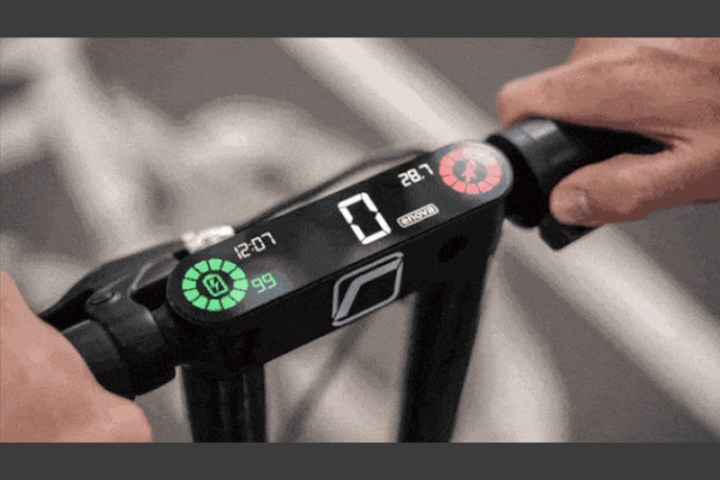Australian e-scooter startup Raine is readying a premium personal mobility alternative for urban dwellers and commuters who would rather not keep a car or ride public transport in the city. The Raine CyberScooter Edition standup electric scooter represents the founders’ focus on electric-powered transportation that balances performance, range, comfort, and safety.
The CyberScooter has a 500-watt hub motor powered by a 48-volt 500-600Wh Lithium-ion battery. Those specs plus the CyberScooter’s 26-pound total weight add up to a top speed up to 31 mph and a range of up to 25 miles. The battery fully recharges in five hours or 50% in less than two hours for up to a 12.5-mile range. According to Raine, the CyberScooter has sufficient power to climb up to 20% grades and hills.
Durability, handling, and safety are paramount concerns for a standup scooter built for daily urban transport duties. The CyberScooter’s frame is constructed from carbon fiber and aircraft-grade aluminum components. The deck surface is a high-grip composite washable silicon. Unique for e-scooters, dual vertical bars help with balance and handling. Raine rates the CyberScooter for up to 264 pounds of rider weight, including a backpack or other luggage.

The CyberScooter’s 10-inch airless high grip tires work in concert with front and rear sprung poly-shock damped suspensions to soften the ride. Front and rear electronic ABS braking systems with traction control consist of a hydraulic front disc brake and a friction guard regenerative rear brake that recharges the battery while you apply the brakes or slow down.
The CyberScooter’s LED lights illuminate nighttime travel and allow you to personalize your ride by selecting brightness and colors for separate front and rear lighting. A handy integrated high-tensile steel cable and an app-controlled electronic immobilizer built-in to the CyberScooter’s handlebars could save the otherwise necessary nuisance of carrying accessory locking devices.

A 5.1-inch wide LED display panel integrated on the center top of the handlebar shows battery charge level, the current time, speed, and estimated remaining travel range. The CyberScooter has a built-in GPS. Used in conjunction with the Raine mobile app, the GPS can help navigate when you’re traveling and display the e-scooter’s location at all times.

When you’re not riding, the CyberScooter’s relatively light weight makes it easy to carry. When you’re ready to ride, simply unfold it and take off. When it’s folded, you can pop the CyberScooter in your car trunk for longer trips.

Two of Raine’s three co-founders, James Murphy and Michelle Mannering, previously launched the successful BajaBoard line of four-wheeled off-road electric skateboards. Murphy and Mannering saw the need for reasonably priced electric-powered standup scooters for everyday use that were accessible to a wider range of riders than skateboards. The duo teamed up with Marc Alexander, a co-founder of Lifx smart light bulbs, to help design the Raine CyberScooter and identical-but-for-color Raine One and bring them to market.
Raine has already garnered nearly $350,000 in pledges, easily surpassing the $50,000 goal in a Kickstarter crowdfunding project with eight days to go. Early pledges for the Raine One are still available for $979, a 35% off the final $1,500 list price. The Kickstarter price includes free shipping anywhere in the world. According to Murphy, more than half of the orders for Raine’s electric scooter are from the U.S. Raine estimates shipments for the Kickstarter pledge reward e-scooters will begin in May 2020.
Murphy also told Digital Trends that Raine is exploring sales and distribution channels in the U.S. As always, we offer a word of caution before backing any crowdfunding project.



